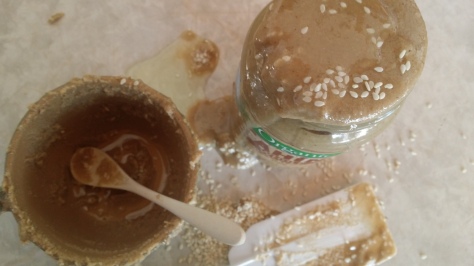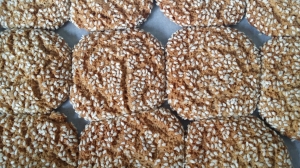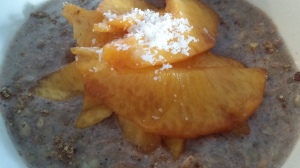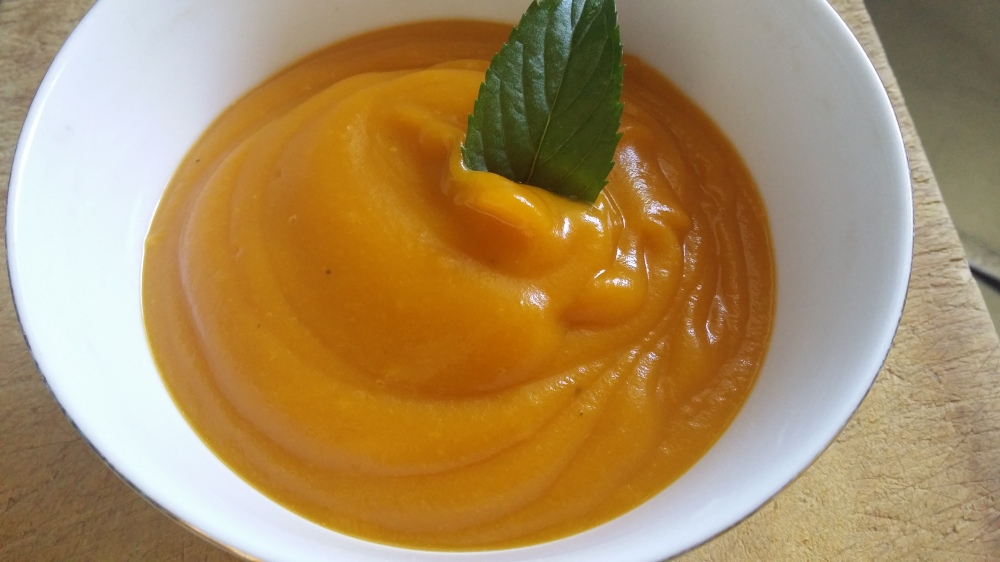Perpetual cocoyo (My weekday brekkie)
Oh bliss…hanging out in my activewear in a different postcode, green tea in the sun and blogging about food…before lunch at the amazing 2 birds eatery and partying with friends tonight…thanks and gratitude for this juicy little MIT (Moment In Time ;)..its the little things that count right…? And the theme of the week has been work life balance…my solution is… Cocoyo….Seriously, life will be taken up a notch by this decadent (but healthy) treat. Forget working late..make some cocoyo… its so easy! Put the weetbix aside…eat cocoyo..its so yummy! Forget financial stress..save $$ with cocoyo..its cheap!
Coconut yoghurt is a staple in my fridge… As is a jar of soaked chia and a defrosted jar of chopped pineapple and a random jar mixture of nuts and seeds, cinnamon and cacao powder..and a sprinkle of maca. Most mornings I’ll grab the handful of oob blueberries I left out to defrost the night before and add a few tablespoons of all of the above and thats brekkie. Fast, nutritious and easy on the digestion. You could add some green powder…or really, whatever floats your boat, coconut is really good… Personally, I find green powder ruins the taste and I prefer to take my green shot (wheat or barley grass, moringa, spirulina, apple cider vinegar) as a one gulp tonic without bastardizing my food!
Note on nuts and seeds – The key to making the nuts and seeds more digestible is to activate them. This removes the phytates. Phytates are not readily available to our digestive systems. This makes a lot of sense. Heres why…Nuts and seeds are able to be stored dry for long periods of time. During this time they lie dormant. As soon as water and light are introduced, life begins! Phytates are the energy that the seed uses to explode into its true form …. (cue inspirational Discovery music and David Attenborough voice over)… a tiny little sprout! So you don’t need phytates in your body..they are super duper seed energy – not homosapien energy.
Anyway…sidetrack…you can buy activated nuts and seeds but they’re expensive. However if you’re a crazy, hippy healthnut such as myself, you might have a dehydrator, in which case you can soak, then dehydrate and store your bounty in glass jars. I highly recommend as you’ll end up with a crunchy, yummy nut or seed…once you’ve had activated, you won’t want to go back. And your tummy will thank you for it!
You might ask the question of all those paleo-manics out there – so clearly cavemen didn’t pull out the dehydrator … so…why bother? I say, take advantage of technology and science…try it..if it works..if its good value for the effort in your world…then good…There are many reasons why our digestive systems aren’t working optimally. This is just one way of helping it along.
I’m a huge fan of getting bang for your buck. I’ve made several batches of cocoyo since my last published cocoyo recipe and after a prompt from a friend I thought I’d run a little update….
Cocoyo
1L Kara coconut cream
1 packet body ecology yoghurt/kefir starter
2 T non refined sweetener (raw honey/brown rice syrup etc)
1. Heat the coconut cream just so its a bit warmer than room temperature. You don’t want it too hot as the good bacteria in the honey will die as will your starter.
2. Add the sweetener and starter. Mix well.
3. Put in oven overnight with the light on.
4. Store in the fridge. Lasts for a couple of weeks minimum.
So this is how you make your first batch. However!! Reserve 1/4 cup from this batch to use as the starter for your next batch IN PLACE OF the body ecology. Now you have Perpetual Cocoyo!!
Notes
1. To make an even thicker yoghurt, store your Kara in the fridge and use just the coconut cream, not the liquid whey. You can also strain it through a few layers of cheesecloth.
2. I’ve found I have the best result (& value for money) with Kara. The next best is the Tradeaid coconut milk which has the consistency of cream. The best coconut cream on the market in terms of straight cream without any preservatives and additives is Ayam, but it just doesn’t make as good of an end product and its more expensive.
3. You can use 6-7 capsules of a good probiotic like Lifestream Advanced instead of Body ecology.
BTW if you’re in Palmy postcode you can buy Kara at any supermarket ($5-$6) and body ecology at Organic living. Its about $10.
Go well healthnuts..have an off the chart weekend x


 The second unfortunate thing about buying cans is they’re full of BPA’s. There’s no doubt that making raw coconut yoghurt from fresh coconut meat is by far a superior method, however finding coconut meat locally is a tall order – a recipe for another day perhaps. By the way if you’re in the Auckland area,
The second unfortunate thing about buying cans is they’re full of BPA’s. There’s no doubt that making raw coconut yoghurt from fresh coconut meat is by far a superior method, however finding coconut meat locally is a tall order – a recipe for another day perhaps. By the way if you’re in the Auckland area, 




 Leda gingernuts are gluten, dairy, egg free, but still sugar heavy with 1.3 tsp of sugar per serving – which is just 2 cookies.
Leda gingernuts are gluten, dairy, egg free, but still sugar heavy with 1.3 tsp of sugar per serving – which is just 2 cookies. Compare these to Griffins gingernuts which have 2.3 tsps of sugar per serving (from brown sugar)and contain gluten and dairy.
Compare these to Griffins gingernuts which have 2.3 tsps of sugar per serving (from brown sugar)and contain gluten and dairy.







